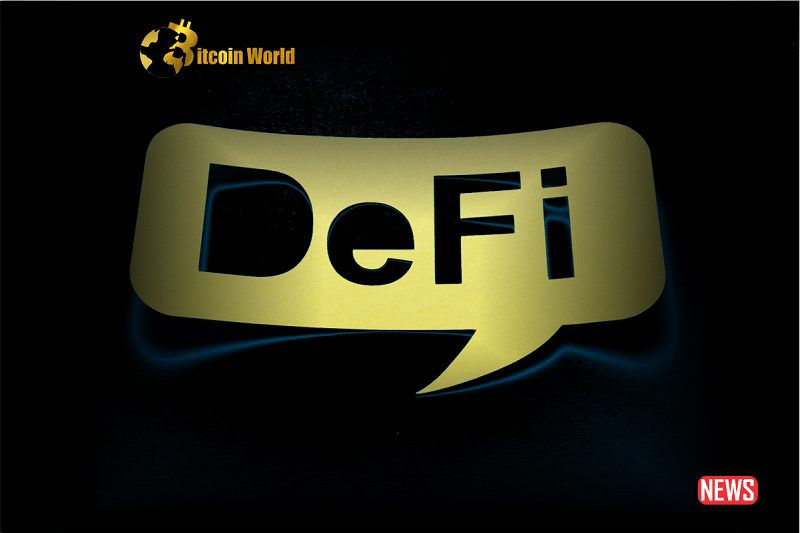Ever felt that knot of anxiety when navigating the world of decentralized finance (DeFi)? You’re not alone. In the familiar landscape of traditional finance, organizations like the FDIC and SIPC stand as reassuring guardians, promising to cushion the blow of bank failures or broker meltdowns. But what about the wild frontier of DeFi? Can these time-tested safety nets be adapted for a world built on blockchains and smart contracts?
The Comfort of the Known: How FDIC and SIPC Protect Traditional Finance
Let’s face it, the peace of mind offered by the Federal Deposit Insurance Corporation (FDIC) and the Securities Investor Protection Corporation (SIPC) is a significant reason why many trust traditional financial institutions. Think of them as the financial world’s superheroes, ready to swoop in when things go south.
- FDIC: Protecting Your Bank Deposits: The FDIC insures deposits in banks, meaning if your bank fails, you’re generally protected up to a certain limit. This prevents widespread panic and maintains stability in the banking system.
- SIPC: Safeguarding Brokerage Accounts: Similarly, the SIPC protects the holdings of investors in brokerage firms. If a brokerage firm goes bankrupt, the SIPC steps in to recover your securities or their cash equivalent.
These organizations are finely tuned to the workings of traditional finance, with established legal frameworks and operational procedures. But the question remains: can this model translate to the decentralized realm?
DeFi’s Unique Landscape: Why Traditional Solutions Might Not Fit
DeFi operates on a different set of rules. It’s permissionless, global, and often anonymous. This presents unique challenges when considering applying traditional insurance mechanisms.
The Spectre of DeFi Hacks: A Different Kind of Risk
One of the most pressing concerns in DeFi is the prevalence of hacks and exploits. Unlike traditional bank failures, where systemic issues or mismanagement are often the culprits, DeFi risks are frequently tied to vulnerabilities in smart contract code. And unfortunately, recovering stolen funds in the decentralized world is notoriously difficult.
Imagine this scenario: a DeFi protocol suffers a major hack, and millions of dollars are drained. Unlike a traditional bank failure where the FDIC can step in, recovering these funds in DeFi often involves complex and lengthy legal battles, with uncertain outcomes. Simply put, the nature of the risk is fundamentally different.
Funding the Safety Net: Where Would the Money Come From?
FDIC and SIPC are primarily funded through membership fees paid by the institutions they protect. Could a similar model work in DeFi?
- Membership Fees: A Necessary Burden? DeFi protocols could potentially pay membership fees to a similar insurance organization. However, the scale of potential losses in DeFi hacks is substantial, meaning these fees would need to be significant.
- The Maker Example: A Case Study: Consider Maker, a prominent DeFi protocol. With a substantial total value locked (TVL), even a seemingly small risk percentage for insurance fees could translate to a large annual cost. The original text highlights that a 0.25% risk percentage could cost Maker around $20 million per year.
For many smaller or newer DeFi protocols, such hefty fees could be unsustainable, potentially stifling innovation and growth.
TVL vs. Revenue: A Fundamental Disconnect
Another crucial point is the basis for calculating these fees. Traditional finance insurance often considers revenue and risk assessments. However, in DeFi, focusing solely on Total Value Locked (TVL) might not be the most accurate or sustainable approach. As the original text points out, taking a percentage of TVL to cover losses could quickly become unsustainable, especially considering the difficulty in recovering hacked assets.
The Importance of Robust Auditing: A Preventative Approach
Perhaps a more effective approach, at least in the short term, lies in prevention. The statistic that over 70% of hacked protocols lacked audits covering the exploited code section underscores the critical need for rigorous and comprehensive auditing practices within the DeFi space.
Navigating the Future: Tailored Solutions for a Decentralized World
So, can DeFi have its own version of the FDIC or SIPC? While the concept is appealing, directly replicating the traditional model presents significant hurdles. The unique characteristics of DeFi demand tailored solutions.
Key Considerations for DeFi Protection:
- Focus on Smart Contract Security: Prioritizing robust auditing, formal verification, and bug bounty programs can help prevent hacks in the first place.
- Explore Decentralized Insurance Models: Several innovative decentralized insurance protocols are emerging, offering peer-to-peer risk sharing and coverage.
- Develop Clear Regulatory Frameworks: As the DeFi space matures, clear and adaptable regulatory frameworks are essential to protect users while fostering innovation.
- Promote User Education: Empowering users with the knowledge to understand the risks involved in DeFi is crucial.
Conclusion: A New Era of Protection for Decentralized Finance
While the comfort and security offered by organizations like the FDIC and SIPC are invaluable in traditional finance, directly transplanting these models into the DeFi ecosystem is a complex challenge. The unique risks and decentralized nature of DeFi necessitate innovative and tailored solutions. As the space continues to evolve, a combination of enhanced security practices, decentralized insurance mechanisms, and thoughtful regulation will be key to building a safer and more sustainable future for decentralized finance. The journey to securing DeFi is ongoing, and it requires a collaborative effort from developers, users, and regulators alike.
Disclaimer: The information provided is not trading advice, Bitcoinworld.co.in holds no liability for any investments made based on the information provided on this page. We strongly recommend independent research and/or consultation with a qualified professional before making any investment decisions.


